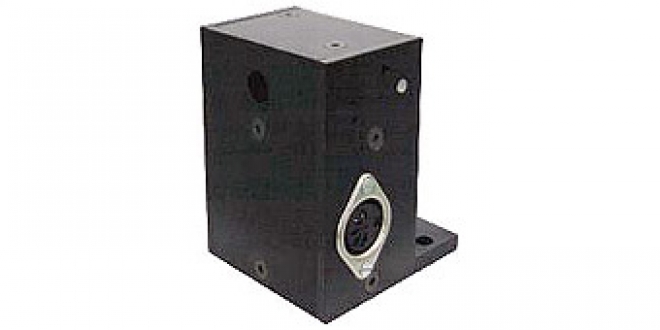
Light Modulator LM-2

Description
In most Brillouin scattering experiments it is essential to be able to modulate the laser intensity reaching the photomultiplier. Thus in back-scattering experiments there is often so much elastic light that the photon counting system is saturated and so no signal is available for stabilising the interferometer. In this case it is necessary to reduce the laser intensity while scanning through the elastic peak.
In forward scattering experiments there is normally so little light that the photon counting system offers insufficient signal for stabilising. In this case it is necessary to introduce some extra laser light into the scattered light signal. This extra signal is not always desirable - for example when studying central modes. Here the only solution is to separate the stabilisation cycles from the measurement cycles - for example by introducing extra laser light only during a cycle of 16 stabilisation scans (MCA gated off) followed by 16 scans when the signal alone is recorded.
Many customers have been frustrated because the traditional acoustooptic modulator is neither directly compatible with the interferometer control unit, nor has it a sufficiently high contrast for all backscattering work. Furthermore the device is expensive
We have now developed a double shutter system which can be integrated into the optical system directly behind the entrance pinhole to the spectrometer. This is of course completely compatible with the interferometer control unit and allows all of the above experimental situations to be mastered at the throw of a switch.
Referring to the attached diagram, the device is seen mounted directly behind the entrance pinhole and outside the spectrometer housing and operates as follows:
-
For scattering experiments where the elastic signal is too strong, a signal is sent from the control unit to close the shutter SH1 while scanning through the elastic peak, and a suitable light signal is introduced for stabilisation purposes via the secondary pinhole with SH2 open.
-
For scattering experiments where insufficient elastic signal is available for stabilisation purposes, the situation is similar to the above case except that SH1 and SH2 both remain permanently open.
-
If the extra light signal from the secondary pinhole disturbs the measurement, then SH2 is opened for a cycle of 16 stabilisation scans while the MCA TRIG signal is gated off. During the next 16 scans SH2 is closed and the experimental signal is recorded . The cycle repeats.
All of the control signals for the above modes of operation are directly available from the control unit. Your interfacing problems are over!
Shutter specifications LM-2
|
Open/close time:
|
2.5ms
|
|
Timing jitter (max.):
|
0.5ms
|
|
Contrast:
|
exceed 105
|
|
Lifetime:
|
>108
|




